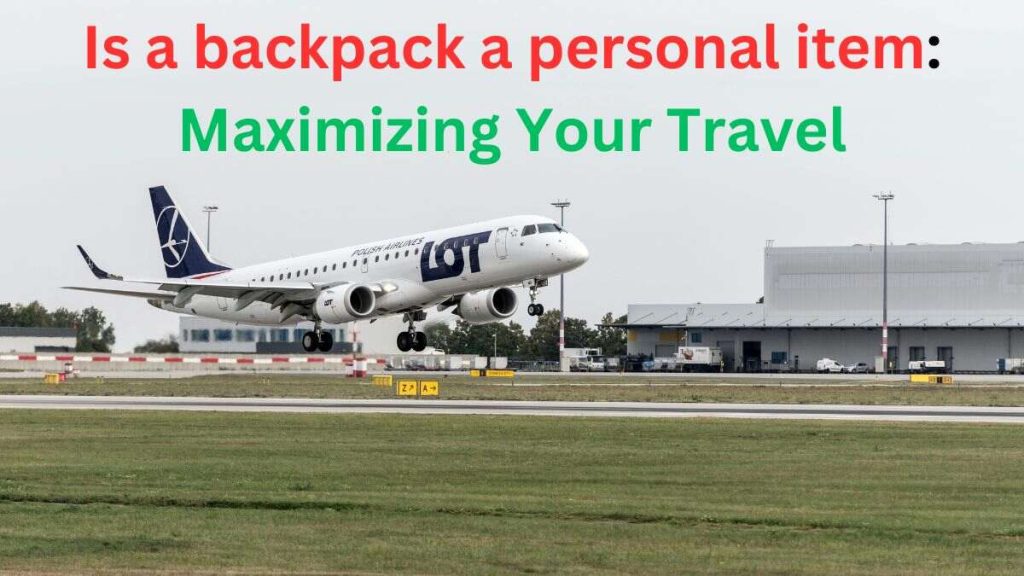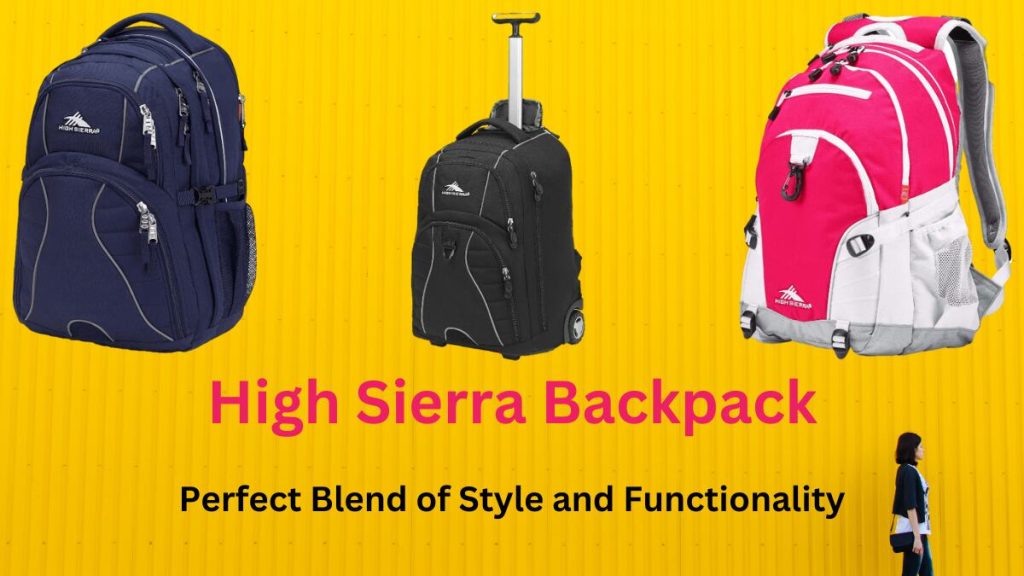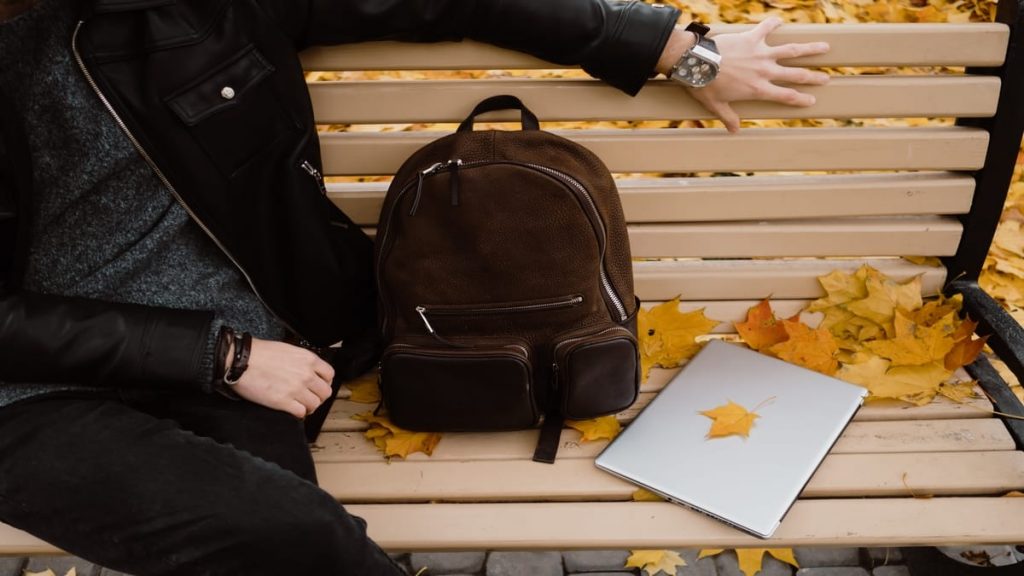As air travel continues to evolve, so do the rules and regulations governing what you can bring on board. One common question that arises for many travelers is, “Is a backpack a personal item?” The answer, unfortunately, isn’t a straightforward yes or no. It depends on various factors, including the specific airline, the size and weight of your backpack, and the current airline policies.
Airlines typically allow passengers to bring two items on board: a carry-on bag and a personal item.
While the exact dimensions and weight limits can vary between airlines, a general guideline is that a personal item should be small enough to fit under the seat in front of you. This is where the confusion often begins. A backpack, while compact, might not always fit under the seat, especially if it’s fully packed.
To navigate this complex issue, it’s essential to understand the specific rules of the airline you’re flying with. Some airlines have more lenient policies, allowing larger backpacks as personal items, while others have stricter regulations. It’s always advisable to check the airline’s website or contact their customer service directly for the most accurate information.
In this post, we’ll delve deeper into the factors that determine whether a backpack can be considered a personal item. We’ll explore the size and weight restrictions, the impact of different airline policies, and tips for packing your backpack efficiently to maximize your chances of bringing it on board as a personal item.
Post Contents
- 1 What Defines a Personal Item?
- 2 Backpacks as Personal Items: A Traveler’s Guide
- 3 Is a Backpack a Personal Item? Navigating Airline Policies
- 4 Tips for Packing a Backpack as a Personal Item
- 5 Top 5 Benefits of Using a Backpack as a Personal Item
- 6 Conclusion: The Backpack Dilemma: A Personal Item or Checked Baggage?
What Defines a Personal Item?
A personal item is typically a small, compact bag that can be easily stowed under the seat in front of you. Common examples of personal items include:
- Purses: These are popular choices for women, as they can hold a variety of essentials, from makeup to wallets.
- Laptop Bags: For those who need to bring their laptop on board, a dedicated laptop bag can be a great option. However, it’s important to ensure that it meets the airline’s size and weight restrictions for personal items.
- Small Backpacks: Is a backpack a personal item? It depends on the size and the specific airline’s policy. Smaller backpacks that can fit under the seat can be considered personal items. However, larger backpacks may need to be checked in as baggage.
| Age Group | Gender | Percentage Using Backpack as Personal Item |
|---|---|---|
| 18-35 | Male | 60% |
| 18-35 | Female | 70% |
| 36-55 | Male | 50% |
| 36-55 | Female | 55% |
| 55+ | Male | 40% |
| 55+ | Female | 45% |
Backpacks as Personal Items: A Traveler’s Guide
When planning your next trip, understanding the nuances of airline baggage policies is crucial. A common question that arises, particularly for backpack enthusiasts, is, “Is a backpack a personal item?” The answer, while not always straightforward, often hinges on the backpack’s size and the specific airline’s regulations.
Size Matters: The Golden Rule for Backpacks
The most critical factor in determining whether a backpack can be classified as a personal item is its size. Airlines have specific dimensions for personal items, typically designed to fit under the seat in front of you. If your backpack exceeds these dimensions, it may be considered a carry-on item and may need to be stored in the overhead bin.
- Measure Your Backpack: Before your trip, measure your backpack’s length, width, and height. Compare these measurements to the specific size restrictions of your airline.
- Prioritize Compactness: Opt for a slim and compact backpack design. Avoid bulky backpacks with multiple external pockets or frames, as these can significantly increase the overall size.
The Type of Backpack: A Closer Look
The type of backpack you choose can also influence its classification as a personal item.
- Slim Backpacks: These are ideal for travel as they can easily fit under the seat. They often have a sleek design and minimal external pockets.
- Laptop Backpacks: While laptop backpacks are essential for many travelers, ensure that they are not too bulky or heavy. Look for slim, streamlined designs that prioritize functionality and portability.
- Hiking and Camping Backpacks: These larger backpacks are typically not suitable for personal items. They are designed for carrying heavy loads over extended periods and are often too large to fit under the seat.
Packing Strategically: Maximizing Space and Minimizing Bulk
The way you pack your backpack can also impact its size and weight.
- Pack Light: Avoid overpacking. Bring only the essential items you need for your trip.
- Utilize Packing Cubes: Packing cubes can help you organize your belongings efficiently and compress your clothes, reducing the overall size of your backpack.
- Prioritize Essentials: Place frequently needed items, such as your passport, boarding pass, and electronics, in easily accessible pockets.
By understanding these factors and packing strategically, you can increase your chances of successfully using your backpack as a personal item and enjoy a smoother travel experience.
When planning your next flight, one common question arises: “Is a backpack a personal item?” While most airlines allow small backpacks as personal items, it’s essential to understand the specific policies of your carrier. Here’s a breakdown of the policies of some major airlines:
American Airlines
American Airlines is generally accommodating when it comes to backpacks as personal items. As long as your backpack meets the size restrictions and can fit comfortably under the seat in front of you, it’s typically considered a personal item. However, it’s always wise to consult the most recent baggage guidelines on the American Airlines website or app to ensure compliance.
Delta Air Lines
Delta Air Lines also allows small backpacks as personal items. Their policy is relatively straightforward: one personal item per passenger. As long as your backpack fits under the seat and adheres to the size limitations, you should have no issues bringing it on board. However, it’s crucial to check Delta’s website or app for the most up-to-date information, as policies can change.
Southwest Airlines
Southwest Airlines, known for its no-frills approach, also permits small backpacks as personal items. The key is to ensure your backpack complies with the size restrictions. While Southwest is generally flexible, it’s advisable to measure your backpack to avoid any surprises at the gate. Checking the Southwest website or app for the latest baggage policies is always recommended.
United Airlines
United Airlines has a similar policy to other major airlines. A small backpack that can fit under the seat in front of you is typically considered a personal item. However, it’s essential to review United’s baggage guidelines, as they may have specific dimensions for personal items. By adhering to these guidelines, you can confidently bring your backpack on board your United flight.
General Tips for Traveling with Backpacks
To ensure a smooth travel experience with your backpack, consider these tips:
- Measure Your Backpack: Before your flight, measure your backpack to ensure it complies with your airline’s size restrictions.
- Pack Light: The lighter your backpack, the easier it will be to carry and store.
- Organize Your Belongings: Use packing cubes or other organizational tools to keep your belongings neatly packed.
- Check Airline Websites: Always consult the specific airline’s website for the most accurate and up-to-date baggage policies.
- Prepare for Potential Gate Checks: In some cases, even small backpacks may need to be gate-checked if the overhead bins are full.
By following these guidelines and staying informed about airline policies, you can confidently travel with your backpack as a personal item and enjoy a hassle-free journey.
Tips for Packing a Backpack as a Personal Item
1. Choose a Compact Design
The first step to ensuring your backpack qualifies as a personal item is to select a bag that’s designed to fit under the seat. A sleek, low-profile backpack is ideal. Look for a bag with minimal external pockets and a streamlined shape. Avoid backpacks with multiple compartments or those that are overly bulky. A smaller backpack not only fits better under the seat but also reduces the temptation to overpack.

2. Organize Your Belongings
A well-organized backpack is a compact backpack. Using packing cubes or slim pouches can help you maximize space and keep your belongings neatly organized. By grouping similar items together, you can reduce the overall volume of your bag. Additionally, packing cubes can help prevent items from shifting during transit, which can help maintain the shape of your backpack.
3. Limit Bulky Items
To keep your backpack as compact as possible, avoid packing bulky items like large water bottles, books, or bulky shoes. These items can take up a lot of space and make your backpack difficult to fit under the seat. If you must bring a water bottle, consider a collapsible or flexible one. For books, consider e-readers or downloading digital copies. And for shoes, wear your bulkiest pair on the plane to save space in your backpack.
4. Use the Main Compartment Wisely
The main compartment of your backpack should be reserved for larger items that don’t need to be accessed frequently. Smaller essentials, like your phone, wallet, and passport, should be stored in the outer pockets for easy access. By strategically packing your bag, you can ensure that it remains compact and easy to manage.
5. Consider a Backpack with a Laptop Sleeve
If you’re traveling with a laptop, choose a backpack with a dedicated laptop sleeve. This will help protect your device and keep it organized. Additionally, many laptop backpacks have features like compression straps that can help you reduce the overall size of your bag.
6. Weigh Your Backpack
Before heading to the airport, weigh your backpack to ensure it meets your airline’s weight restrictions for carry-on luggage. A heavy backpack can quickly exceed the weight limit and result in additional fees.
7. Check Airline Policies
Always check your airline’s specific baggage policies before your flight. Some airlines have stricter size and weight restrictions for personal items than others. By familiarizing yourself with the rules, you can avoid any surprises at the airport.
Top 5 Benefits of Using a Backpack as a Personal Item
A backpack can be a convenient and practical choice for your personal item during air travel. Here are the top five benefits of using a backpack:
1. Comfort and Convenience
Backpacks are designed to distribute weight evenly across your back and shoulders, making them more comfortable to carry than other types of bags. This is especially beneficial during long layovers or when navigating crowded airports. Additionally, backpacks often have multiple compartments and pockets, allowing you to organize your belongings efficiently. You can easily access your essentials, such as your passport, boarding pass, and electronics, without having to rummage through a larger bag.
2. Easy Accessibility and Storage
One of the biggest advantages of a backpack is its accessibility. Most backpacks can be easily slipped under the seat in front of you, ensuring that your belongings are always within reach. This is particularly convenient for accessing items during the flight, such as snacks, drinks, or electronic devices. Moreover, backpacks often have a variety of pockets and compartments, allowing you to organize your belongings effectively. This can help you save time and reduce stress, especially when you’re in a hurry to catch a connecting flight.
3. Hands-Free Mobility
A backpack frees up your hands, allowing you to move around more easily. This is especially helpful when navigating busy airports, boarding planes, or going through security checkpoints. You can carry other items, such as a jacket or a duty-free purchase, without having to worry about juggling multiple bags. This can make your travel experience more comfortable and less stressful.
4. Versatility and Adaptability
Backpacks are incredibly versatile and can be used for a variety of travel situations. Whether you’re going on a short weekend getaway or a long international trip, a backpack can accommodate your needs. You can choose a backpack that is the right size for your trip and pack it accordingly. Additionally, many backpacks are designed to be durable and water-resistant, protecting your belongings from the elements.
5. Cost-Effective and Eco-Friendly
Using a backpack as your personal item can save you money. Many airlines charge fees for checked baggage, but personal items are usually free. By using a backpack, you can avoid these additional costs and save money on your trip. Additionally, choosing a durable, high-quality backpack can reduce your environmental impact. By opting for a reusable bag, you can help minimize waste and contribute to a more sustainable future.
Conclusion: The Backpack Dilemma: A Personal Item or Checked Baggage?
In conclusion, whether a backpack qualifies as a personal item or should be checked as baggage depends on several factors, including airline policies, specific flight routes, and the size and weight of the backpack. While many airlines allow backpacks as personal items, it’s crucial to check the specific guidelines of your airline to avoid any unexpected fees or inconveniences.
By carefully considering these factors and adhering to airline regulations, you can optimize your travel experience and ensure a smooth journey.
We encourage you to share your thoughts and experiences in the comments section below. Have you encountered any challenges or tips regarding backpack policies? Let us know!




